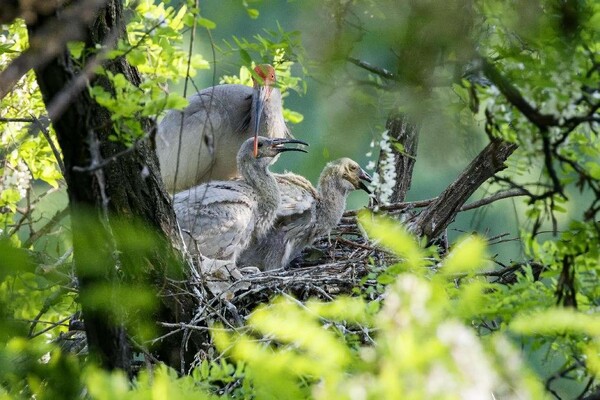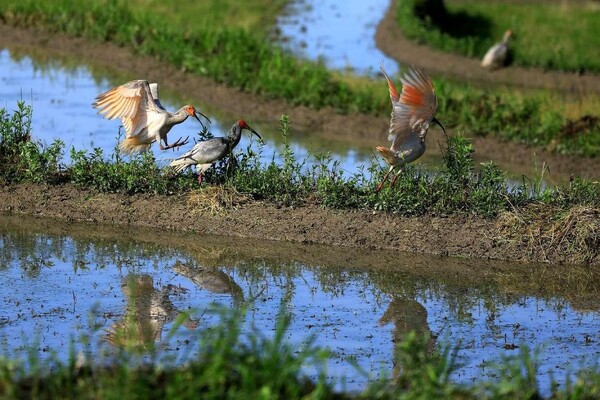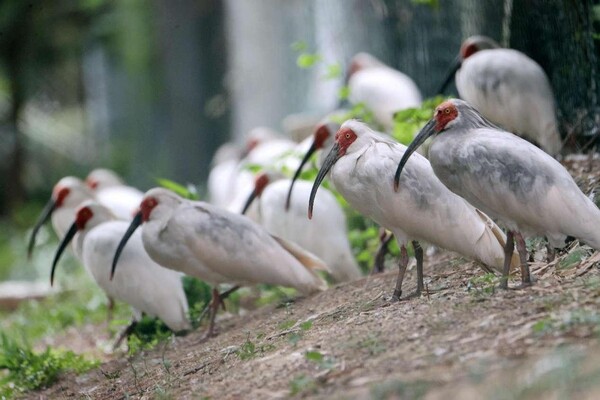By Gong Shijian, People's Daily
The global population of the crested ibis has reached 11,000, according to statistics released by China's National Forestry and Grassland Administration. This has downgraded the conservation status of the species from critically endangered to endangered.

The habitat of these birds has gradually been restored from Yaojiagou, Yangxian County, northwest China's Shaanxi province, where they were initially discovered, to their historical distribution area in East Asia.
The population growth and the expanding habitat of the species make a remarkable ecological miracle that astonishes the world.
The crested ibis is dubbed as the "oriental gem." It was once widely distributed in China, Japan, the Korean Peninsula, and the Russian Far East. However, the global population of the species drastically declined in the 20th century due to environmental changes and human interference, and the birds were once thought to be extinct.
Fortunately, Chinese experts rediscovered seven wild crested ibises in Yangxian county in 1981. Over the past 42 years, continuous conservation efforts have led to a significant increase in the global population of the species, from the original seven to more than 10,000 today.
"In the decade or so after the rediscovery of crested ibises, our research personnel and volunteers have been monitoring and protecting every nest around the clock," Zhang Yueming, senior engineer at the Shaanxi Hanzhong Crested Ibis National Nature Reserve, told People's Daily.
"Nowadays, we have shifted from protecting individual birds through constant surveillance to protecting the entire ecosystem," he added.

In addition to implementing in-situ conservation measures such as habitat restoration, population monitoring, and community co-management, conservation personnel have actively worked on artificial breeding techniques for crested ibis and explored the possibilities of reintroducing the birds into the wild.
The habitat area for wild crested ibises has expanded from less than 5 square kilometers when it was discovered to 16,000 square kilometers.
Through relentless efforts, Shaanxi province has successively fostered crested ibis populations that are able to support themselves after being reintroduced into the wild, and launched rewilding programs in Ningshan county of Ankang, Yaozhou district of Tongchuan, Qianyang county of Baoji, Zhouzhi county of Xi'an, Linwei district of Weinan and Lantian county of Xi'an.

As a result, crested ibises have crossed the Qinling Mountains and entered the Yellow River Basin from the Yangtze River Basin. Up to now, Shaanxi has reintroduced 560 crested ibises into the wild, increasing the population of wild crested ibises to over 6,600. The national population of crested ibises has reached over 9,800.
In recent years, Shaanxi province has exported a total of 158 crested ibises to other countries, and helped establish more than 20 artificial populations. Among them, 14 crested ibises have been sent to Japan, South Korea, and other countries for the establishment of translocated populations or collaborative research. This not only promotes the conservation of the species, but also builds a bridge of friendly exchanges with the world.

